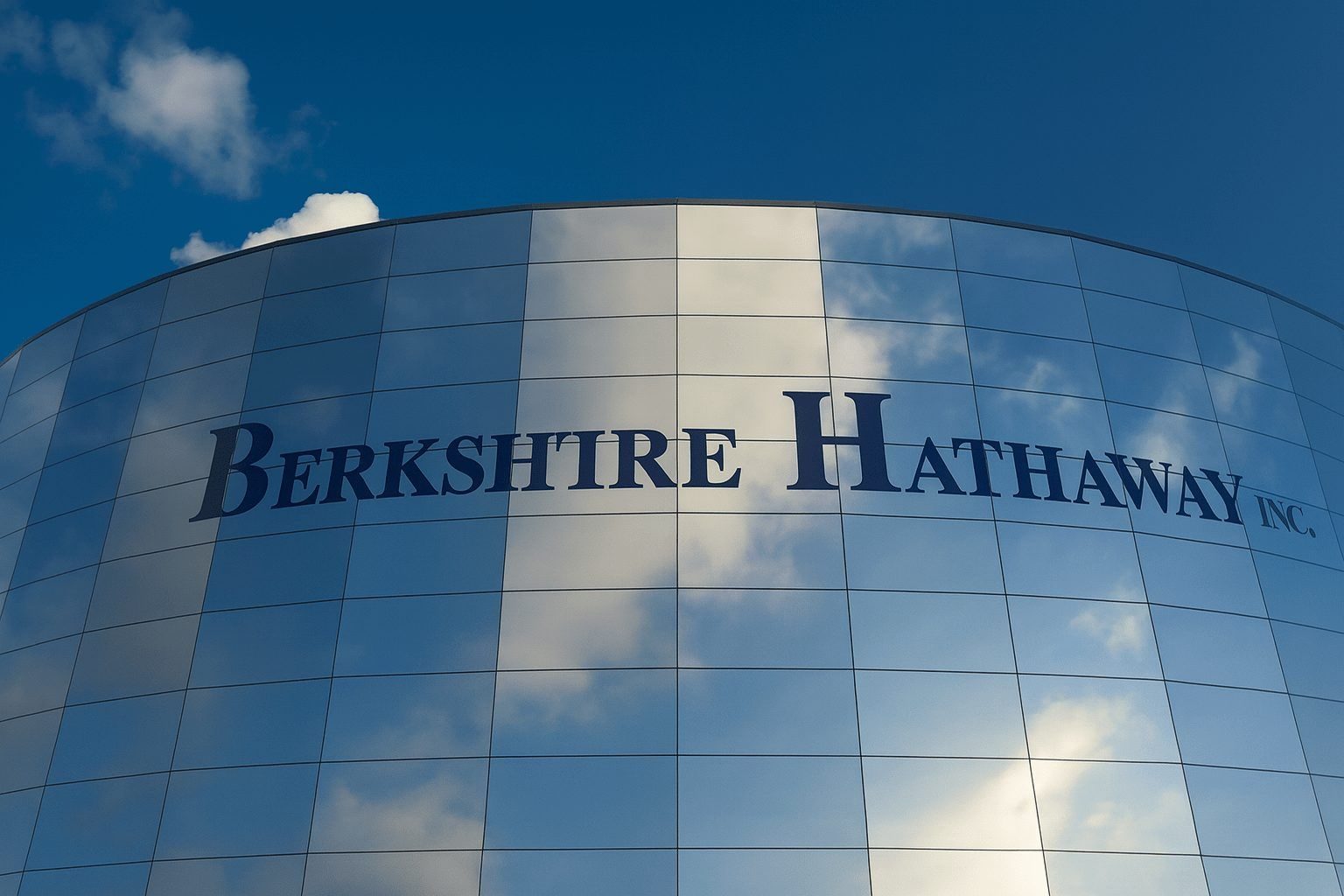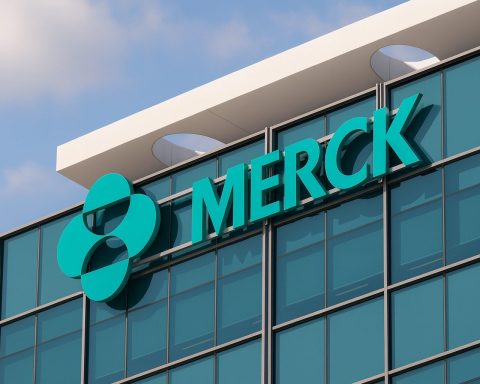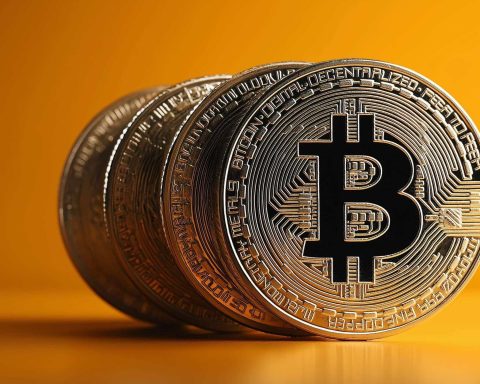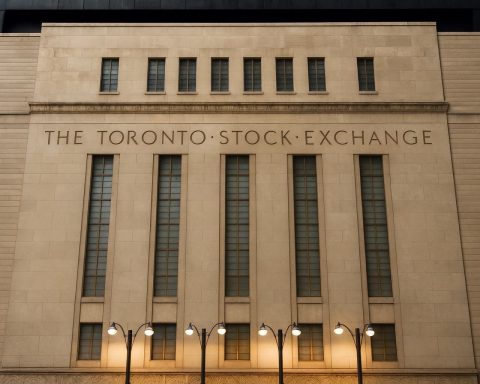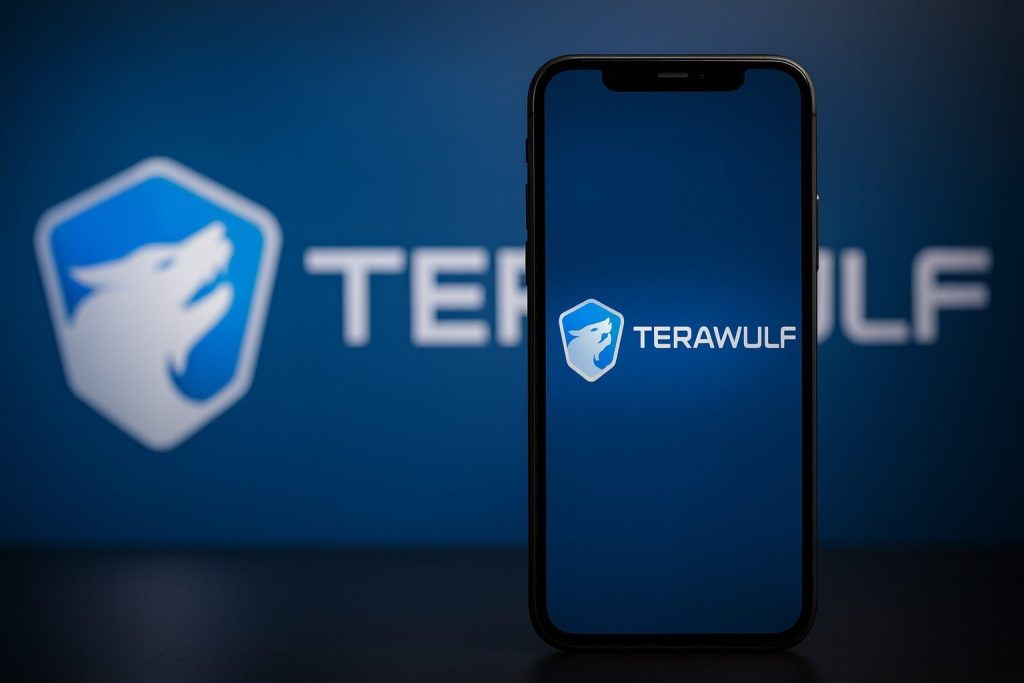Berkshire Hathaway Inc. (NYSE: BRK.B, BRK.A) spent Monday, 24 November 2025 trading slightly lower, but the real story around the stock is happening off the price chart:
- Bill Gates’ foundation has sold another 2.4 million Berkshire shares,
- Warren Buffett is making a $4.3 billion bet on Alphabet and artificial intelligence,
- the company is sitting on a record cash pile of more than $380 billion, and
- a long‑planned CEO handover to Greg Abel is getting closer. [1]
Here’s what Berkshire Hathaway investors need to know about the stock today, 24 November 2025.
Berkshire Hathaway stock price today (24 November 2025)
Class B shares (BRK.B)
- Last price: roughly $500 per share (around $500.1 at the close, depending on data source). [2]
- Day move: down about 0.8% versus Friday’s close near $504. [3]
- Intraday range: roughly $497–$505. [4]
- 52‑week range: about $440.10–$542.07, putting today’s price ~8% below the high and ~14% above the low. [5]
Class A shares (BRK.A)
- Last price: around $749,000–$750,000 per share, with live quotes today clustered just under $750k. [6]
- Day move: roughly –0.7% versus Friday’s close around $755,000. [7]
- 52‑week range: about $660,640–$812,855, leaving the stock ~8% below its high and ~13% above the low. [8]
On a multi‑month view, Simply Wall St estimates Class A shares are up about 6% over the last 12 months, roughly 12% year‑to‑date, and have delivered a 57.8% total return over three years, despite short‑term pullbacks. [9]
At today’s levels, Berkshire’s market capitalization is around $1.08 trillion and the stock trades at roughly 1.5–1.6 times book value and mid‑teens price‑to‑earnings based on trailing earnings. [10]
1. Bill Gates just sold 2.4 million Berkshire shares – should investors be worried?
One of today’s highest‑profile headlines is that the Bill & Melinda Gates Foundation Trust trimmed its Berkshire stake again.
According to a new analysis published via Nasdaq and The Motley Fool:
- The Gates Foundation Trust sold 2.4 million Berkshire shares last quarter, part of a broader wave of selling across many of its holdings. [11]
- Even after the sale, the trust still owns more than 21 million Berkshire shares, worth roughly $11 billion, and Berkshire remains its single largest position. [12]
- The Berkshire position’s portfolio weight dropped from about 30% to 25%, which the article frames as a move toward better diversification rather than an outright loss of faith. [13]
The analysis highlights two key drivers behind the sale:
- Rich valuations and a cash‑heavy balance sheet
- Berkshire now holds more than $380 billion in cash, “more than one‑third of its entire market cap,” according to the author. [14]
- With the S&P 500 trading at elevated valuation multiples, the Gates team appears to be de‑risking and reducing exposure even to relatively conservative holdings like Berkshire.
- Portfolio concentration
- Despite Berkshire’s diversification, a 25–30% single‑stock allocation is a big swing for a charitable foundation.
- Trimming Berkshire frees capital to redeploy into other causes or assets while leaving it as the trust’s largest single holding. [15]
Takeaway:
Gates’ sale is not a vote of no confidence in Berkshire so much as a combination of risk management, diversification, and high‑level macro caution. The trust still keeps a huge exposure to the stock.
2. Buffett’s $4.3 billion Alphabet bet pushes Berkshire further into AI
Another major storyline today is Warren Buffett’s newly revealed $4.3 billion stake in Alphabet (Google).
A fresh piece from 24/7 Wall St lays out the move: [16]
- Berkshire invested about $4.3 billion into Alphabet in Q3 2025, accumulating roughly 17.85 million voting shares at an average price near $225. [17]
- With Alphabet’s share price surging recently, Barron’s estimates Berkshire is already sitting on gains of around 40% on the position, with Alphabet up about 25% in the past month alone. [18]
- The investment comes just weeks before Buffett hands the CEO role to Greg Abel on New Year’s Day, fuelling speculation that this is both a “legacy bet” on AI and a glimpse into Berkshire’s post‑Buffett playbook. [19]
A separate analysis from The Motley Fool contrasts Buffett’s AI stance with that of Michael Burry (of “The Big Short” fame):
- Recent 13F filings show Burry shorting AI‑heavy names like Nvidia and Palantir, while Berkshire is adding Alphabet. [20]
- The article frames Berkshire’s Alphabet position as a fundamental, cash‑flow‑driven AI play, focused on Google’s dominant search franchise, cloud profits, and heavy AI infrastructure spending.
Takeaway:
Buffett has historically avoided most tech stocks, outside his enormously successful Apple investment. A multi‑billion‑dollar move into Alphabet signals that Berkshire wants meaningful exposure to “picks and shovels” of the AI economy—but in a business that already throws off massive cash and enjoys a wide moat.
3. Energy tailwinds: Goldman Sachs and Berkshire’s oil exposure
Today’s narrative around Berkshire also ties into energy markets.
A detailed Motley Fool article, syndicated on Nasdaq, highlights how a recent Goldman Sachs “peak oil” report may benefit Berkshire: [21]
- Goldman now expects global oil demand to keep rising until around 2040, pushing back its prior peak‑oil estimate by five years.
- The report notes demand from jet fuel, AI data‑center power needs, and slower‑than‑expected EV adoption as key drivers.
- Berkshire offers an indirect but sizable energy play:
- It owns about 265 million shares of Occidental Petroleum and 122 million shares of Chevron, worth over $30 billion combined, representing roughly 10% of Berkshire’s equity portfolio. [22]
- Within Berkshire Hathaway Energy, it also controls multiple gas pipeline businesses and fuel‑related subsidiaries (Kern River, Northern Natural Gas, BHE GT&S, Lubrizol, Pilot Travel Centers, and others). These units collectively add over $1 billion in annual operating income, about 5% of Berkshire’s GAAP bottom line. [23]
Takeaway:
If Goldman’s more bullish long‑term oil demand view proves correct, Berkshire could enjoy decades of cash flow from its pipeline and energy assets, while its equity stakes in OXY and CVX give it leveraged upside without owning a pure‑play oil major outright.
4. Warren Buffett’s latest on stock splits and Berkshire’s unique share structure
On the governance and shareholder‑structure side, Investopedia published a new feature today summarizing Warren Buffett’s long‑held views on stock splits. [24]
Key points:
- Buffett argues that stock splits often encourage short‑term speculation, increase trading costs, and risk detaching share prices from intrinsic value.
- He has repeatedly said that Class A shares will never be split, even though they trade around $750,000 per share in Q4 2025. [25]
- The Class B shares, created in 1996 and split 50‑for‑1 in 2010 to facilitate the BNSF acquisition, were designed as a lower‑denomination entry point for long‑term, “owner‑type” investors—not as a reversal of his anti‑split philosophy. [26]
- Today, B shares trade at roughly 1/1,500th of an A share’s price, with reduced voting power, but offer the same underlying economic exposure. [27]
Takeaway:
Buffett’s stance matters for valuation because it helps keep Berkshire’s shareholder base long‑term‑oriented and less speculative, which can dampen volatility and support prices closer to estimated intrinsic value over time.
5. Leadership transition and philanthropy: what Buffett’s final letters signal
Berkshire’s stock is also trading against the backdrop of a historic leadership change.
Recent coverage from Business Insider and Kiplinger confirms that: [28]
- Warren Buffett, 95, will step down as CEO by the end of 2025, after roughly six decades at the helm.
- He plans to remain chairman of the board, while Greg Abel, currently overseeing non‑insurance operations, will take over as CEO.
- In his final Thanksgiving letter as CEO, Buffett:
- Reassured shareholders he will keep a “significant” stake in Class A shares until investors are as comfortable with Abel as they were with Buffett and Charlie Munger. [29]
- Highlighted that Berkshire stock has suffered drawdowns of 50% or more three times, but always rebounded—an explicit reminder to focus on long‑term compounding rather than short‑term swings. [30]
- Emphasised accelerating his philanthropic giving, including more than $1.3 billion of Berkshire shares to family foundations. [31]
Berkshire’s own November 10 news release shows Buffett recently converted 1,800 Class A shares into 2.7 million Class B shares to donate: [32]
- 1.5 million B shares to the Susan Thompson Buffett Foundation.
- 400,000 B shares each to The Sherwood Foundation, The Howard G. Buffett Foundation, and the NoVo Foundation.
At today’s BRK.B price near $500, that block of 2.7 million B shares represents roughly $1.3–1.4 billion of stock, in line with the giving levels Buffett outlined.
Takeaway:
The succession plan is clear and already in motion. Buffett’s continued chairmanship, large personal stake, and donor‑funded share conversions signal confidence in Berkshire’s future while gradually transferring wealth out of his own estate.
6. Q3 2025 earnings: soaring operating profits and a record cash pile
Much of today’s commentary on Berkshire stock still traces back to the strong third‑quarter results released on 1 November.
From Berkshire’s own Q3 press release and subsequent coverage: [33]
- Net earnings attributable to Berkshire shareholders were about $30.8 billion in Q3 2025, up from roughly $26.3 billion a year earlier.
- Operating earnings, the figure Buffett prefers as a gauge of business performance, jumped to about $13.5 billion, up roughly 33–34% year on year.
- Berkshire’s cash and equivalents reached a record ~$381.7–382 billion by the end of September, most of it invested in short‑term U.S. Treasury bills. [36]
- The company sold about $6.1 billion of equities during the quarter and has sold roughly $184 billion of stock over the past three years, according to a Financial Times summary and other reports. [37]
- Berkshire did not repurchase any of its own shares for the fifth consecutive quarter, despite having wide authority to do so when Buffett deems the stock undervalued. [38]
Several analysts interpret the record cash and lack of buybacks as a sign that Buffett and Abel see limited bargains in today’s market, even though the underlying businesses are performing strongly. [39]
7. Is Berkshire Hathaway stock undervalued or fairly priced?
Valuation is front and center in many of today’s research pieces.
Classic value metrics
Recent data from multiple sources suggest: [40]
- Price‑to‑Book (P/B):
- Around 1.56–1.6× book value based on recent closes near $504 and book value per B share of about $323.
- Price‑to‑Earnings (P/E):
- Around 16× trailing twelve‑month earnings, according to several data providers, versus a long‑term average closer to the low‑teens.
- Market cap:
- Roughly $1.08 trillion, making Berkshire one of the world’s largest companies by market value.
The Bill Gates article notes that Berkshire’s P/B has recently hovered around 1.6×, toward the upper end of its 10‑year range of 1.2–1.5×, which helps explain why a valuation‑sensitive investor might trim exposure at these levels. [41]
Intrinsic value estimates
Simply Wall St’s new deep dive on BRK.A concludes that, on their discounted cash‑flow model: [42]
- Berkshire’s shares may be trading at over 30% below their estimate of fair value, suggesting the stock could be materially undervalued if their assumptions hold.
- They also highlight a 5.8% 1‑year total shareholder return and 57.8% 3‑year return, reinforcing the long‑term compounding story even when near‑term returns look modest.
Morningstar’s latest post‑earnings article (behind a partial paywall) similarly revisits Berkshire’s fair‑value estimate in light of strong Q3 earnings and the still‑massive cash hoard, though the precise fair‑value number is not visible in the public snippet. [43]
Reconciling the views
- Value‑oriented models (DCF / sum‑of‑parts) often see Berkshire as modestly undervalued, especially when they give full credit for the cash pile and private businesses. [44]
- Market‑based metrics (P/B, P/E) tell a more nuanced story: the stock is not cheap on headline multiples, but also far from tech‑style extremes and arguably reasonable for a diversified, low‑leverage conglomerate with a top‑tier capital allocator.
8. What today’s developments mean for Berkshire Hathaway investors
Putting the pieces together, here’s how today’s news flow looks for shareholders and potential buyers:
- Price action is calm; fundamentals remain strong
- BRK.B around $500 and BRK.A around $750k reflect only modest profit‑taking after a solid multi‑year run.
- Earnings power is rising, not falling, with operating earnings up more than 30% in Q3. [45]
- Bill Gates’ sale is a yellow flag on valuation, not a red flag on the business
- The Gates Foundation Trust is still heavily invested in Berkshire but is trimming into strength to manage risk and diversify. [46]
- Buffett is still willing to swing big when he sees opportunity
- The $4.3 billion Alphabet stake shows that Berkshire is prepared to lean into AI and mega‑cap tech when prices and business quality line up with its value lens. [47]
- Energy, infrastructure and “boring” cash flows quietly matter
- Goldman’s extended peak‑oil timeline plus Berkshire’s pipelines, utilities, and OXY/CVX stakes give shareholders a stealthy energy‑income engine that could pay off for decades, even if oil prices fluctuate. [48]
- Succession risk is real but structured
- Buffett’s planned exit as CEO and Greg Abel’s promotion are no longer theoretical; they are imminent.
- However, Buffett will remain chairman and a major shareholder, and his final letters emphasize confidence that Berkshire can outlast its founders. [49]
- The cash pile cuts both ways
- Nearly $382 billion of cash and T‑bills gives Berkshire enormous optionality in a future market downturn. [50]
- But until bargains appear, that cash also drags on returns and fuels debate over whether shareholders would be better served by more aggressive buybacks or special dividends.
9. Key things to watch after today
For investors following Berkshire Hathaway stock after 24 November 2025, a few catalysts stand out:
- Greg Abel’s first moves as CEO (January 2026 onward) – capital allocation decisions, commentary on AI and energy, and his approach to buybacks. [51]
- Any deployment of the $380+ billion cash pile – large acquisitions, stepped‑up equity buying, or a meaningful restart of share repurchases. [52]
- Alphabet and AI exposure – whether Berkshire increases or trims its Alphabet stake, and how that position performs relative to the broader tech and AI complex. [53]
- Further 13F filings – more clarity on recent new positions in stocks like Alphabet, Chubb, Domino’s Pizza, and Sirius XM, and continued reductions in Apple and Bank of America. [54]
Important disclaimer
This article is for informational and educational purposes only and does not constitute financial advice, investment recommendation, or an offer to buy or sell any security. Always do your own research and, where appropriate, consult a licensed financial advisor before making investment decisions.
References
1. www.nasdaq.com, 2. www.investing.com, 3. www.macrotrends.net, 4. www.investing.com, 5. www.investing.com, 6. markets.financialcontent.com, 7. www.macrotrends.net, 8. www.indmoney.com, 9. simplywall.st, 10. www.macrotrends.net, 11. www.nasdaq.com, 12. www.nasdaq.com, 13. www.nasdaq.com, 14. www.nasdaq.com, 15. www.nasdaq.com, 16. 247wallst.com, 17. www.barrons.com, 18. www.barrons.com, 19. 247wallst.com, 20. finviz.com, 21. www.nasdaq.com, 22. www.nasdaq.com, 23. www.nasdaq.com, 24. www.investopedia.com, 25. www.investopedia.com, 26. www.investopedia.com, 27. www.investopedia.com, 28. www.businessinsider.com, 29. www.businessinsider.com, 30. www.businessinsider.com, 31. www.businessinsider.com, 32. www.berkshirehathaway.com, 33. berkshirehathaway.com, 34. finance.yahoo.com, 35. www.nasdaq.com, 36. www.investopedia.com, 37. www.ft.com, 38. www.investopedia.com, 39. www.fool.com, 40. www.financecharts.com, 41. www.nasdaq.com, 42. simplywall.st, 43. www.morningstar.com, 44. simplywall.st, 45. finance.yahoo.com, 46. www.nasdaq.com, 47. 247wallst.com, 48. www.nasdaq.com, 49. www.businessinsider.com, 50. www.investopedia.com, 51. www.kiplinger.com, 52. www.investopedia.com, 53. 247wallst.com, 54. seekingalpha.com
